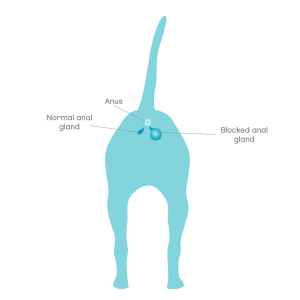Anal gland disease in dogs is a common problem that affects any age, breed, or sex. If caught early, it can be quick and simple to treat.
All dogs have two small sacs on the inside of the anus called the anal glands. Their normal function is to release a few drops of liquid into the stools to give them a distinctive smell. This is most likely a way to mark their territory.
What is anal gland disease in dogs?
The most common problem is when the glands fill up with a thin, brown secretion. If this happens, they need emptying. Your local vet can do this (usually without sedation), and the symptoms should resolve. Occasionally, we also see anal gland infections, impactions, and abscesses.- Infections and impactions are sometimes found when emptying the glands. The discharge is different in colour and thickness.
- Abscesses often appear as a painful red swelling on the side of the anus. They may burst and produce a yellowish-green or bloody discharge.
- Though not as common, dogs also get anal gland tumours.
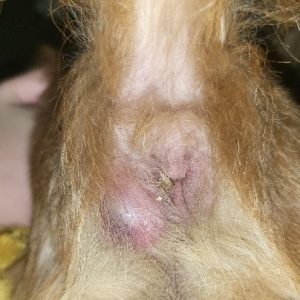
Symptoms of anal gland disease in dogs
Dogs may show the following signs when the anal glands are full- Scooting, dragging, or rubbing their bottoms on the ground. Worms can also cause similar symptoms, find out more about Worms in dogs
- Licking or chewing around the tail, anus, and back legs.
- Hair loss around the tail or back.
- Suddenly sitting down or turning to look at their bottom.
- Straining or discomfort when passing faeces.
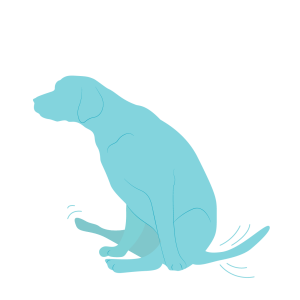
Are some dogs at greater risk of anal gland disease than others?
These factors can lead to an increased risk of anal gland problems:- Low-quality or inadequate diets (especially those low in fibre)
- Soft stools, Diarrhoea, and infrequent bowel movements.
- Skin conditions and allergies, including Food allergies
- Obesity
- Although all dogs can develop anal gland problems, they are more common in small breeds. These include the Cavalier King Charles Spaniel, Cocker Spaniel, Bichon Frise, and Shih Tzu.
How is anal gland disease diagnosed in dogs?
If the anal glands are full, they will need emptying. We recommend an appointment with your local vet for this. Emptying the glands is usually straightforward and should completely resolve the problem. We advise you not to empty the anal glands yourself unless under veterinary advice. This can cause serious damage if it’s not done the right way.- For the diagnosis of anal gland infections, your vet may take a swab. This test will diagnose what germs are growing and what the best medication is to get rid of them.
- For growths or thickenings of the glands, your vet will take a biopsy. This will show what the cells are and if any further treatment is necessary.
What’s the treatment for anal gland disease in dogs?
Full anal glands
Your vet will empty the glands, and the symptoms should resolve within 24 hours.Anal gland impactions
Your vet will empty the glands. The glands might also need flushing under sedation, depending on the severity. Pain relief medication may be necessary for a few days.Anal gland infections
Antibiotics are usually required to clear the infection. These are often given in tablet form. Your vet may also insert an antibiotic liquid into the glands. This is usually done under sedation.Anal gland abscesses
Antibiotics and pain relief medications as this condition can be painful.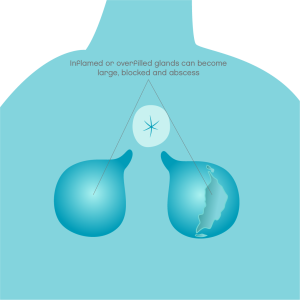
How to look after a dog with anal gland disease at home
- Use a warm compress on the area to relieve some of the discomfort. You can do this for 5-10 minutes and repeat it 2-3 times daily.
- Keep the area around the bottom as clean and dry as possible.
- Add fibre to the diet, such as canned pumpkin, bran flakes, or dog fibre supplements. This can help to firm up the faeces in the short term.
Tips on how to prevent anal gland problems in dogs
- Good-quality, complete dog food is extremely important. Abnormal stools are the main cause of anal gland disease.
- Use fibre supplements for dogs. These can help prevent anal gland disease.
- Get your dog’s anal glands emptied regularly. This should only be necessary if they develop symptoms. Some dogs will need their gland emptied every 4-8 weeks.
- Keep your dog in a healthy body condition and provide adequate exercise.
Body Condition Scoring (BCS) in dogs
Body Condition Score (BCS) is a scale that gives a practical evaluation of the fat coverage of your dogs body. By checking how easy or not it is to feel certain bony areas of the body, a score is then produced. There are several scales, from 1 to 5 or 1 to 9. The ideal body condition lies in the middle, so either 3/5 or 5/9.
The body areas normally checked for fat coverage are:
1. ribs and spine
2. hips and shoulders
3. waist
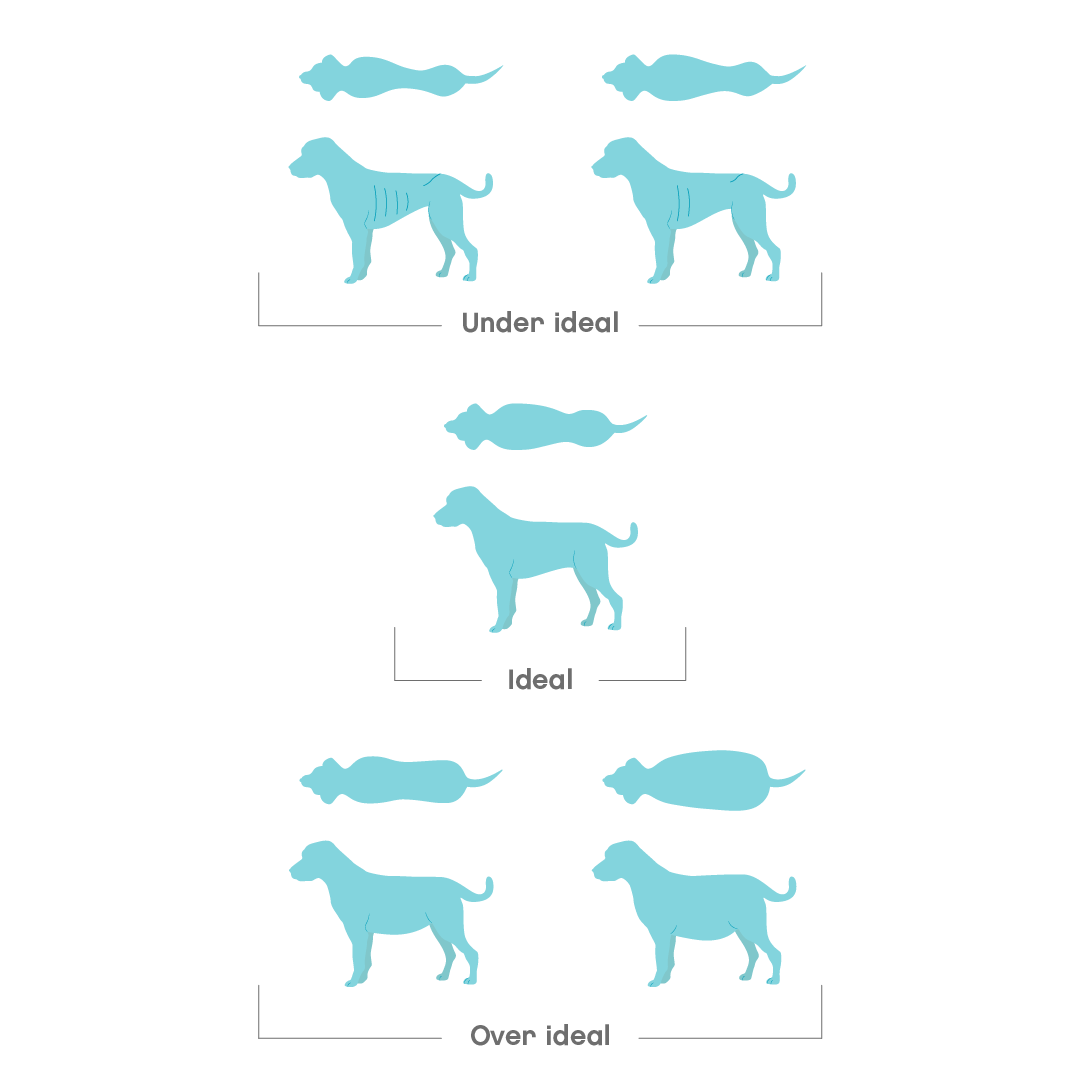
Here are a few tips on how to do it.
With your pet in a standing position:
- Place your hands on the rib cage and gently feel for each rib, without pressing too hard
- Feel the waist and look from the top and the side (if you have a very furry breed, it may be harder to assess)
- Feel the spine, which runs down the middle of the back
- Feel the top of the hips and shoulders
When you should be worried about anal gland disease in dogs
Full anal glands are usually not urgent unless they are causing severe discomfort. Try to make an appointment within 5 days to get them emptied by your local vet. Anal gland abscesses can be very painful. We recommend getting them checked out with your local vet within 24 to 48 hours. køb viagra Joii can help if- You are unsure if your dog has anal gland symptoms.
- You see any abnormalities around your dog’s bottom.
- You have any questions about supplements used to help with anal gland problem.
- You have any questions regarding your dog’s diet or weight.
